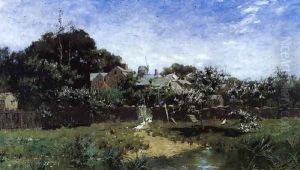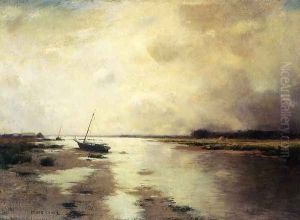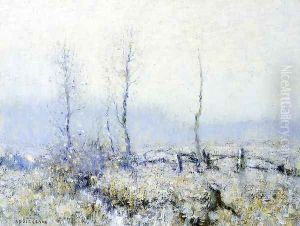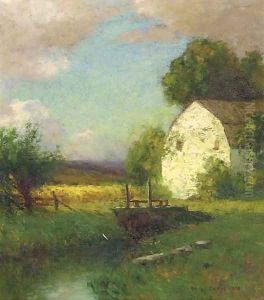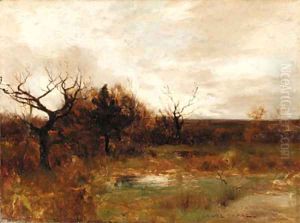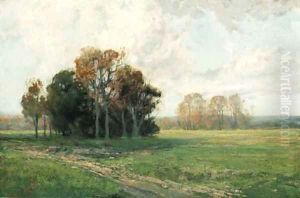Robert Bruce Crane Paintings
Robert Bruce Crane was an American landscape painter, born on October 17, 1857, in New York City. He is best known for his depictions of the American northeast landscape, particularly for his autumnal scenes, which vividly capture the serene and contemplative beauty of nature. Crane was a significant figure in the American Tonalist movement, a style that emerged in the 1880s, emphasizing mood and atmosphere through the use of color and light.
Crane’s early life in the bustling environment of New York City did little to hint at his future as a landscape painter. However, his passion for art led him to pursue formal training. He studied at the Art Students League of New York and later in Europe, where he was influenced by the Barbizon school, a French movement that advocated for realism in landscape painting and inspired the impressionist movement. Crane's European studies were crucial in shaping his artistic methods and philosophy, particularly his emphasis on painting en plein air (outdoors).
Upon returning to the United States, Crane became an active participant in the art community. He spent significant time in East Hampton, Long Island, and later established himself in the art colonies of Old Lyme, Connecticut, and subsequently, in the Berkshires in Massachusetts. These locations provided him with ample inspiration for his landscapes. His work during this period is characterized by a subtle, muted palette with an emphasis on the harmonious interplay of light and shadow, capturing the quiet majesty of the American countryside.
Crane received considerable recognition during his lifetime. He was a member of the National Academy of Design and the American Watercolor Society, among other prestigious art organizations. His paintings were exhibited widely, including at the Paris Salon, where he garnered international acclaim. Despite the changing trends in art, Crane remained committed to his vision, continuing to paint landscapes that reflected his deep appreciation for the natural world.
Robert Bruce Crane's legacy is that of a painter who captured the essence of the American landscape with a quiet, profound beauty. His work continues to be celebrated for its contribution to American art, particularly within the context of the Tonalist movement. Crane passed away on October 29, 1937, in Bronxville, New York, leaving behind a body of work that continues to inspire and captivate audiences with its timeless appeal.
